Biome
Biome: a contemporary, retro-futuristic sans serif
Biome™ by Carl Crossgrove is a striking and individual typeface that has a vast spectrum of potential uses. Its shapes combine elements of biomorphism with minimalist elements and the humanist tradition of font design. This hyperfamily with its 42 variants is not only at home in print design projects, but is the perfect webfont for internet sites.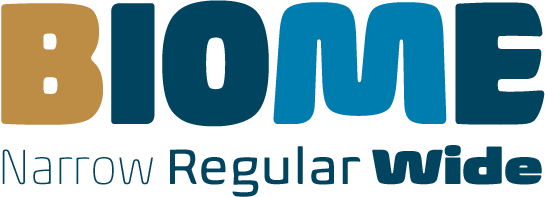 This typeface bears the name ‘Biome’, and biome is a term that is also used to designate a kind of ecosystem. Like these ecoregions, which represent a perfectly coordinated system of an immense number of factors, Biome is also a symbiosis of various experimental aspects and influences that were combined in a long drawn-out design process. The starting point for this process was Crossgrove’s ambivalent attitude towards the futuristic design movements of the mid-20th century. He was fascinated by the minimalism and biomorphism of this era but, at the same time, repelled by the overly ascetic and rational elements. As a consequence, he began to look for a way to merge humanist, biomorphic and minimalist features in what, in his words, is a form of “organic modernism”.
This typeface bears the name ‘Biome’, and biome is a term that is also used to designate a kind of ecosystem. Like these ecoregions, which represent a perfectly coordinated system of an immense number of factors, Biome is also a symbiosis of various experimental aspects and influences that were combined in a long drawn-out design process. The starting point for this process was Crossgrove’s ambivalent attitude towards the futuristic design movements of the mid-20th century. He was fascinated by the minimalism and biomorphism of this era but, at the same time, repelled by the overly ascetic and rational elements. As a consequence, he began to look for a way to merge humanist, biomorphic and minimalist features in what, in his words, is a form of “organic modernism”.
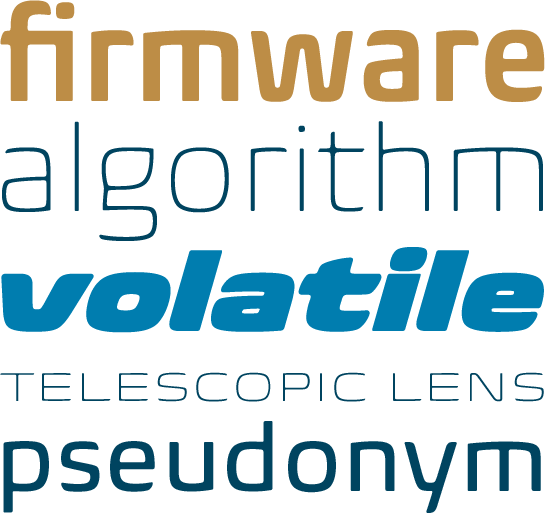
In the sketches that formed the basis for his typeface Biome, Crossgrove experimented with inner and outer shapes in different styles, adapted letters to the form of the superellipse, and added curves only to remove these again. His challenge was to find a harmonious and coherent approach that provided sufficient contrast with existing fonts.
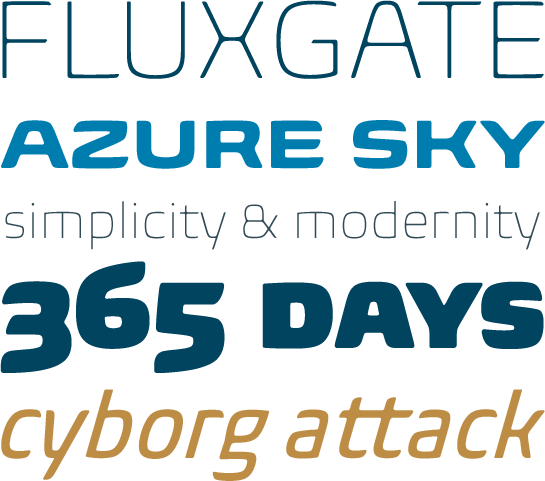
Biome is essentially in the sans serif tradition and the letters exhibit only minor variations in terms of line thickness. There is still a suggestion of the superellipse at many points, but this never becomes the predominant design factor. While most of the terminals of the vertical strokes are only slightly rounded, the horizontals and diagonals have pronounced arches and it is these that basically determine the round and soft character of the typeface.
The more unconventionally shaped letters, such as the lowercase ‘g’ with its two semi-open counters and the ‘k’ and ‘x’ with their crossbars, provide Biome with an individual personality. And this effect is emphasised by the generously rounded links in the ‘v’ and ‘w’ and the uppercase ‘M’ and ‘N’.

Biome has been designed as a typeface hyperfamily. From the near hairline Extra Light to the amply proportioned Ultra, there are seven clearly differentiated weights and three tracking widths. There are oblique italic versions of all variants. The range includes small caps and numeral sets containing lowercase and uppercase digits. With its available range of characters, Biome can be used to set texts in all Eastern European languages.
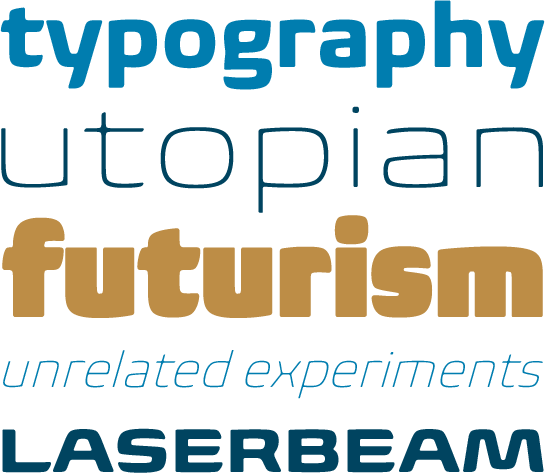
Although the remarkable individuality of Biome is most clearly apparent in the larger point sizes, this typeface is not just suitable for producing headlines and logos. Biome’s elegant visual effects mean that it is equally comfortable in short texts while its large x-height and generous counters make it readily legible even in the small font sizes. Biome is a contemporary typeface that employs mid-20th century futurist elements which ironically give it a retro feel.
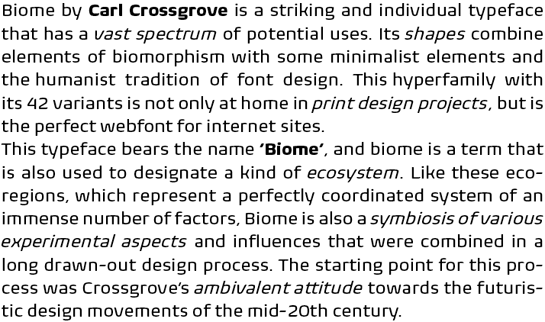
Read the handsomely illustrated article “Biome – the making of a typeface” available at ILoveTypography. In this article, Carl Crossgrove describes the various processes that went into the creation of his font Biome.
Read also our interview with Carl Crossgrove.
Read also our interview with Carl Crossgrove.